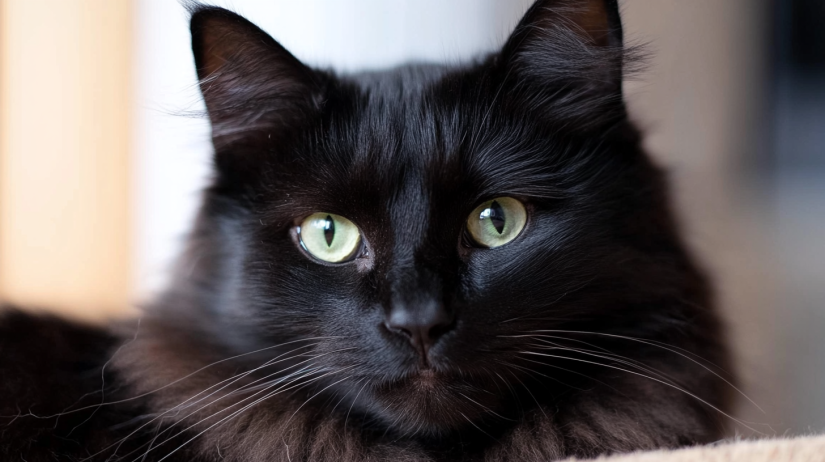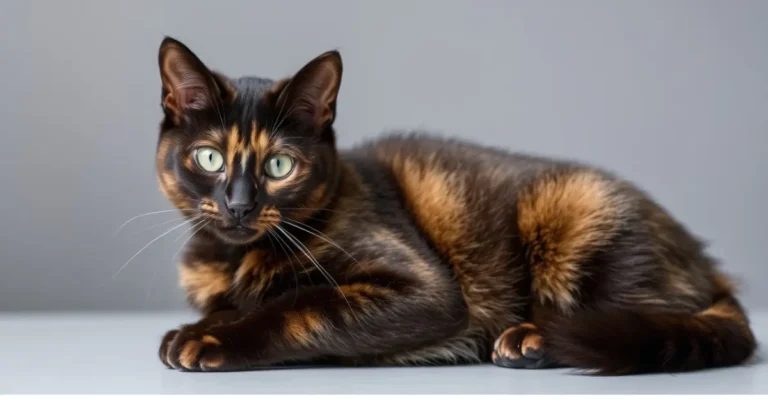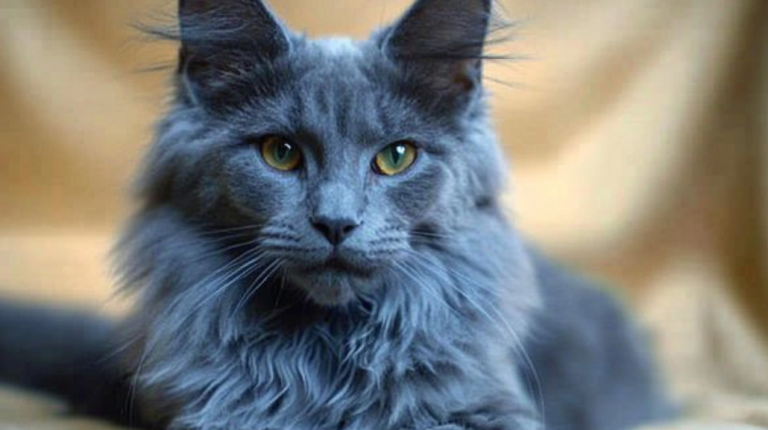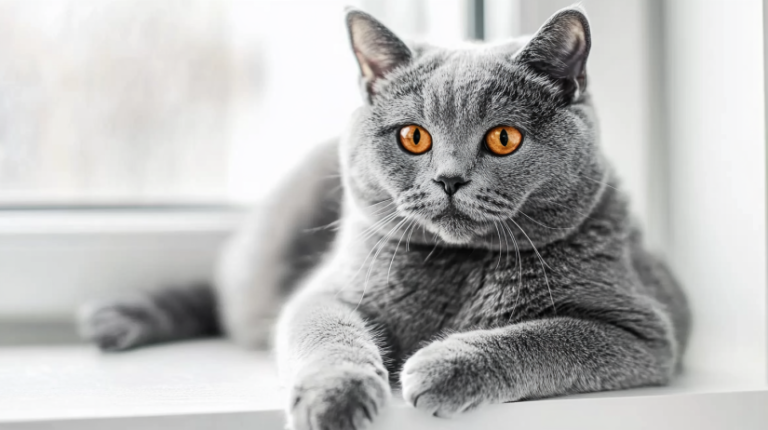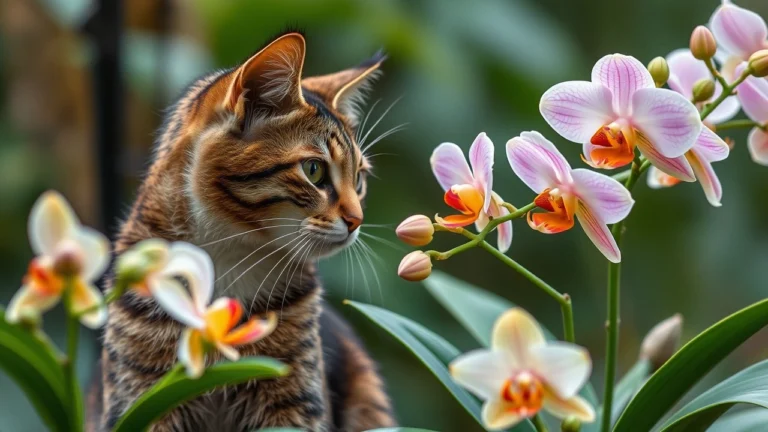Black Ragdoll Cat: 7 Astonishing Reasons This Adorable Feline Wins Hearts
Introduction
Have you ever daydreamed about sharing your home with a luxurious cat that exudes both charm and mystery? If so, a Black Ragdoll Cat might just be your new obsession. These stunning felines boast a coat so glossy it seems like midnight sky on four paws—and if you love the cuddly, laid-back nature of traditional Ragdolls, you’ll be thrilled to discover that a Black Ragdoll Cat comes with that exact same affectionate personality.
In the pages ahead, you’ll uncover the history of this intriguing color variation, learn about its distinct traits, and gather practical tips to make your Black Ragdoll Cat’s life as wonderful as possible. From playful stories to authoritative references, you’ll gain confidence in caring for your captivating cat. Let’s dive in!
Table of Contents
- Understanding the Black Ragdoll Cat Heritage
- Physical Traits of a Black Ragdoll Cat
- Personality and Temperament
- Health and Nutrition Essentials
- Grooming Your Black Ragdoll Cat
- Living Arrangements and Enrichment
- Costs and Budgeting
- Frequently Asked Questions (FAQs)
- Conclusion
- Key Takeaways
Understanding the Black Ragdoll Cat Heritage
To fully appreciate the allure of the Black Ragdoll Cat, it helps to understand how Ragdolls first came to be. The Ragdoll breed is credited to Ann Baker, a California-based breeder in the 1960s. Traditional Ragdolls are known for their pointed coats, which typically come in colors like seal, blue, chocolate, or lilac. But within the gene pool, there is room for “solid” colors as well, and that includes black.
- Origins and Evolution
- Ragdolls emerged from selective breeding focusing on docile and affectionate cats.
- “Solids” or non-pointed Ragdolls sometimes come in solid colors like black, white, or tortie.
- The Black Ragdoll Cat maintains the same gentle temperament that made Ragdolls famous.
There’s some debate about how common or rare these black variants truly are. According to The International Cat Association (TICA), Ragdolls are recognized mostly in pointed colors, but some breeders have been working on solid Ragdoll lines for decades. Regardless of rarity, one thing is certain: A Black Ragdoll Cat is every bit as loving as its lighter-hued siblings.
Physical Traits of a Black Ragdoll Cat
Ragdolls, in general, are large, muscular, and plush. A Black Ragdoll Cat fits this mold exactly, with the notable twist of a deep, dark coat.

General Appearance
- Body Size: Typically a Black Ragdoll Cat can weigh between 10 to 20 pounds, reflecting the breed’s larger frame.
- Coat: Glossy and silky, with a dense undercoat. The midnight hue tends to appear uniform across the body, tail, and face.
- Eye Color: You might see a range—some solid black Ragdolls display gold or green eyes, while others may still have the mesmerizing blue or aqua tones more typical of color-point Ragdolls.
Coat Color Details
The intensity of the black coat can vary. Some lines produce a Black Ragdoll Cat with faint shading, while others maintain a pure jet-black shade from ears to tail tip.
According to a study published in the journal PLOS Genetics, feline coat coloration can be influenced by multiple genes, including those controlling melanin. As a result, the “black gene” can exhibit slight variations, leading to subtle differences in shading or highlights under bright light.
Personality and Temperament
Affectionate, docile, and famously calm—this is the Ragdoll temperament in a nutshell. A Black Ragdoll Cat carries these hallmarks with ease. Often called “puppy-like,” Ragdolls love to follow you around, greet you at the door, and snuggle on your lap.
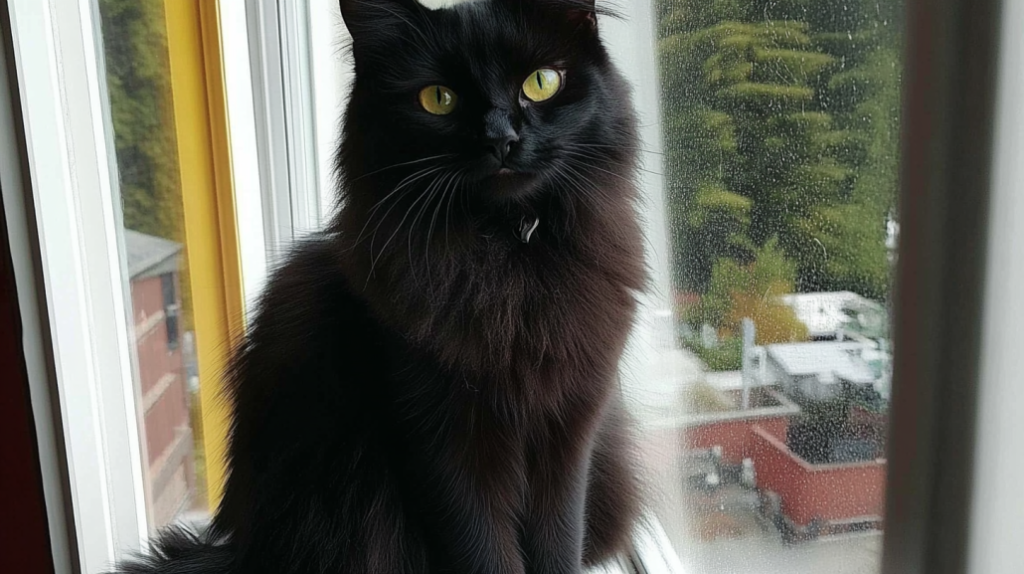
Social Nature
- They naturally enjoy the company of children and different pets.
- They rarely show aggression, preferring to stay calm under most circumstances.
- Known for their relaxed demeanor, Ragdolls often become a gentle fixture in the family home.
Intelligence and Play
- Don’t let their easygoing vibe fool you; a Black Ragdoll Cat is smart.
- Puzzle toys, teaser wands, and interactive play sessions keep them mentally and physically engaged.
- Their attentiveness and love for interaction make them great at learning simple tricks, like fetch or coming when called.
Health and Nutrition Essentials
Like any breed, a Black Ragdoll Cat can be predisposed to certain health conditions. A well-rounded diet, routine vet visits, and preventive care are keys to a healthy life.
Common Health Concerns
- Hypertrophic Cardiomyopathy (HCM): A heart condition that’s somewhat common in Ragdolls. Regular checkups and echocardiograms help detect issues early.
- Urinary Tract Issues: Some cats might be prone to urinary crystals or infections. Providing plenty of fresh water can help.
- Obesity: Because of their laid-back nature, Ragdolls may become overweight. Balanced diets and portion control are essential for a Black Ragdoll Cat’s long-term well-being.
Diet and Feeding
According to the Association of American Feed Control Officials (AAFCO) guidelines, a complete and balanced feline diet must include proteins, fats, vitamins, minerals, and carbohydrates in the right proportions. This means:
- High-Quality Protein: Poultry, fish, or other meat-based sources are vital.
- Balanced Fat Content: Look for cat foods rich in healthy fats like omega-3s to support coat health.
- Limited Treats: Moderation is critical to avoid weight gain.
Grooming Your Black Ragdoll Cat
One of the biggest draws to owning a Black Ragdoll Cat is that silky, plush coat. Thankfully, grooming requirements are fairly straightforward if done consistently.
Brushing Routine
- Frequency: Aim for two to three brushing sessions per week.
- Tools: A soft-bristle brush or a comb designed for medium to long-haired cats works best.
- Technique: Gently move along the direction of hair growth to prevent tangles and mats, especially behind the ears and under the legs.
Nail and Dental Care
- Trim your Black Ragdoll Cat’s nails once every two to three weeks to keep them from snagging on carpets or furniture.
- Dental hygiene is crucial; consider regular brushing with pet-safe toothpaste or using dental treats approved by your vet.
(Reference: The American Veterinary Medical Association (AVMA) emphasizes routine grooming and dental care as part of responsible pet ownership.)
Living Arrangements and Enrichment
Ragdolls, including the Black Ragdoll Cat, adapt well to various living spaces. Whether you’re in a cozy apartment or a spacious house, their mellow temperament usually makes them comfortable—provided they have mental stimulation and access to cozy spots.
Indoor vs. Outdoor
Most experts, like those at the ASPCA (American Society for the Prevention of Cruelty to Animals), recommend keeping cats indoors for safety. A Black Ragdoll Cat is especially suited to indoor living thanks to its calm temperament. If you’d like to give your cat fresh air, consider a secure catio or supervised leash walks.
Environmental Enrichment
- Climbing Trees: Ragdolls might not be as agile as some smaller breeds, but they enjoy having a perch to observe from.
- Interactive Toys: Toys that imitate small animals help hold their attention.
- Scratching Posts: Give them choices to hang out on flat surfaces or climb up high..
Costs and Budgeting
Before bringing home a Black Ragdoll Cat, it’s wise to consider expenses. Plan for both adoption fees and routine expenses to ensure your cat’s well-being.
| Expense Category | Approximate Cost Range | Details |
|---|---|---|
| Initial Purchase/Adoption | $200 – $2,000+ | Varies widely depending on whether you adopt from a shelter or buy from a specialized breeder. |
| Veterinary Care | $200 – $600 annually | Includes annual checkups, vaccinations, possible spaying/neutering. |
| Food & Treats | $300 – $600 annually | Quality cat food plus occasional treats. |
| Grooming Supplies | $50 – $150 annually | Brushes, combs, shampoos, and other grooming essentials. |
| Toys & Accessories | $50 – $200 annually | Scratching posts, toys, cat trees, and other enrichment items. |
| Pet Insurance | $200 – $400 annually | Optional but can help manage unexpected vet costs. |
Frequently Asked Questions (FAQs)
Below are some of the most common questions people ask about Ragdolls and specifically the Black Ragdoll Cat.
What is the rarest color of Ragdoll?
The rarest Ragdoll colors often include lilac, chocolate, and yes, sometimes the Black Ragdoll Cat in certain breeder circles. Color rarity varies by location and breeding lines. Ultimately, each Ragdoll, including a Black Ragdoll Cat, is special.
Are black Ragdolls truly uncommon?
A Black Ragdoll Cat is less common than the traditional pointed Ragdoll. However, breeders dedicated to solid-colored lines are helping them gain popularity. With patient searching, you can find a healthy Black Ragdoll Cat.
What is the personality of a black and white cat?
While coat color isn’t the only factor determining temperament, a Black Ragdoll Cat crossed with white markings can inherit the same sweet, laid-back Ragdoll nature. Personalities are shaped by genetics and environment. Each Black Ragdoll Cat has its own unique character.
Do black Ragdolls still go limp?
Yes, a Black Ragdoll Cat can exhibit the famed “ragdoll flop” when relaxed or picked up. This trait is part of the breed’s genetic disposition to become utterly calm. It doesn’t depend on coat color, so Black Ragdoll Cat enthusiasts can expect the same endearing behavior.
Can Black Ragdoll Cats have blue eyes?
Most solid-colored Ragdolls have green or gold eyes, but in rare cases, a Black Ragdoll Cat may retain bluish hues. Eye color depends on genetics and breeding lines. For a striking look, a Black Ragdoll Cat with blue eyes can be quite stunning.
How do I keep a Black Ragdoll Cat’s coat shiny?
Brushing a Black Ragdoll Cat two to three times a week prevents tangles and distributes natural oils. A high-quality, protein-rich diet supports healthy fur. Regular vet checkups help ensure your Black Ragdoll Cat stays in top shape.
Are Black Ragdoll Cats good with children?
Yes, a Black Ragdoll Cat is famous for its gentle and tolerant nature. They’re typically patient with younger family members, making them great companions. Always supervise initial interactions to ensure everyone’s safety and comfort.
Does a Black Ragdoll Cat require special diet changes?
Not usually—coat color alone doesn’t dictate diet. A balanced, vet-recommended meal plan benefits every Black Ragdoll Cat. Consistency in quality ingredients and portion control is key to their well-being.
Conclusion
A Black Ragdoll Cat may be less common than its pointed siblings, but it’s every bit as loving, loyal, and laid-back. From the glossy midnight coat to the gentle “flop” trait, this feline radiates charm and curiosity. Whether you’re searching for a calm companion to curl up on your lap or a confident cat that greets you at the door, the Black Ragdoll Cat checks all the boxes. By providing the right nutrition, veterinary care, and mental stimulation, you’ll build a life-long bond with your midnight-furred friend. We invite you to share your own experiences and insights in the comments—your journey could inspire someone else to discover the magic of a Black Ragdoll Cat!
For further information on responsible cat ownership and adoption resources, consult the ASPCA, a reputable organization dedicated to animal welfare.

